Transforming your outdoor space into a haven of comfort doesn’t require a seasoned designer’s touch—just the right ideas and a bit of enthusiasm. Whether you’re just starting your outdoor adventure or you’re a seasoned pro looking to elevate your backyard bliss, “9 Outdoor Comfort Ideas for Your Next Project” offers a treasure trove of inspiration and practical tips to make your vision a reality.
Imagine the joy of sipping morning coffee in a cozy nook or hosting a dinner party under twinkling patio lights. This guide will not only spark your creativity but also equip you with actionable insights to create spaces that are as functional as they are beautiful. Dive in with confidence, knowing that every homeowner can achieve the perfect blend of style and comfort in their outdoor oasis.
Incorporate Retractable Canopy Systems
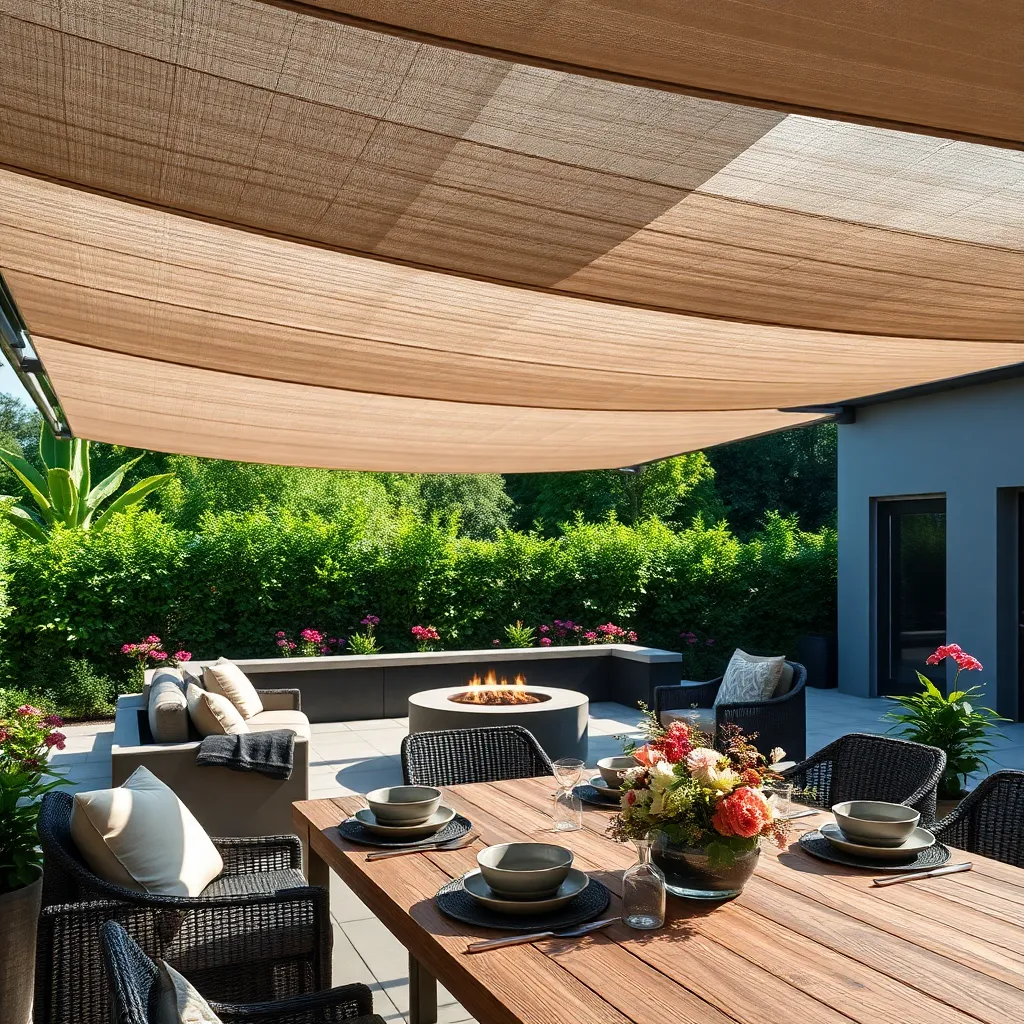
For a versatile and stylish outdoor space, consider incorporating a retractable canopy system. These systems offer the flexibility to enjoy sunny days or create shade when needed, making them perfect for patios, decks, and garden areas. Opt for weather-resistant materials like aluminum or powder-coated steel for the frame and durable fabrics such as acrylic or polyester for the canopy, ensuring longevity and ease of maintenance. Beginners can start with pre-made kits that include easy-to-follow instructions, while advanced DIYers might opt to customize their setup to match their aesthetic preferences.
When planning your retractable canopy system, consider the structure’s dimensions and placement to maximize functionality. Ensure the canopy is wide enough to cover your seating area completely, which typically means extending at least two feet beyond the edge of your furniture for adequate protection. For those seeking a more advanced setup, integrate motorized systems for effortless operation and consider adding side panels for additional wind and privacy protection. This thoughtful addition can transform your outdoor area into a true extension of your living space, adaptable to any weather condition.
Utilize Modular Outdoor Furniture
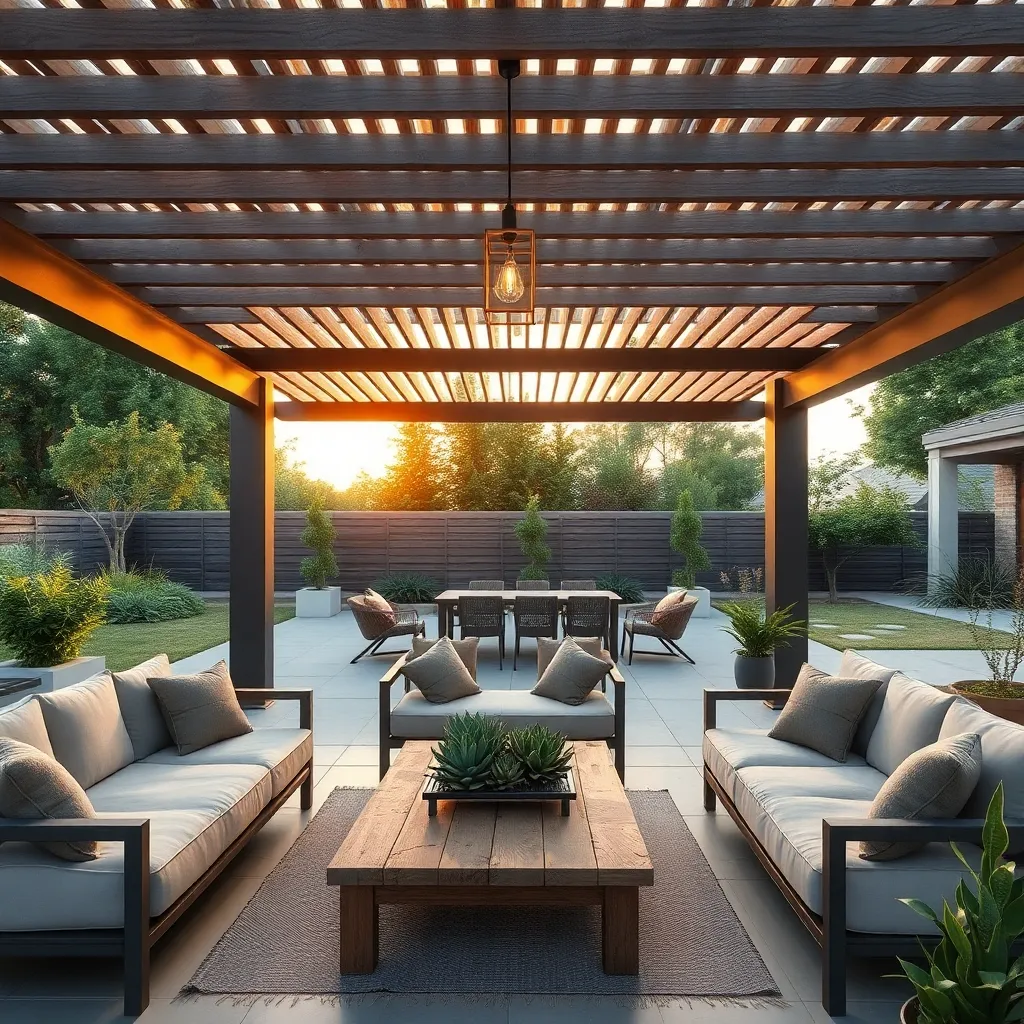
To enhance your outdoor comfort, consider utilizing modular outdoor furniture, which offers flexibility and style for any space. Modular pieces allow you to customize your setup based on the occasion, whether you’re hosting a large gathering or enjoying a quiet evening. Opt for materials like weather-resistant wicker, aluminum, or teak, which withstand the elements and require minimal maintenance. Beginners can start with basic sets that include a few essential pieces, while experienced designers can mix and match to create unique seating arrangements.
For added functionality, look for modular furniture that incorporates built-in storage or multi-purpose designs. Some advanced options include pieces with hidden compartments for cushions or tables that expand to accommodate more guests. When selecting furniture, consider dimensions that suit your space, ensuring walkways remain clear and comfortable. Keep a neutral palette for the base pieces, then personalize with vibrant cushions or throws to inject color and warmth. With these versatile options, you can adapt your outdoor area effortlessly as your needs evolve.
Add Portable Heating Solutions
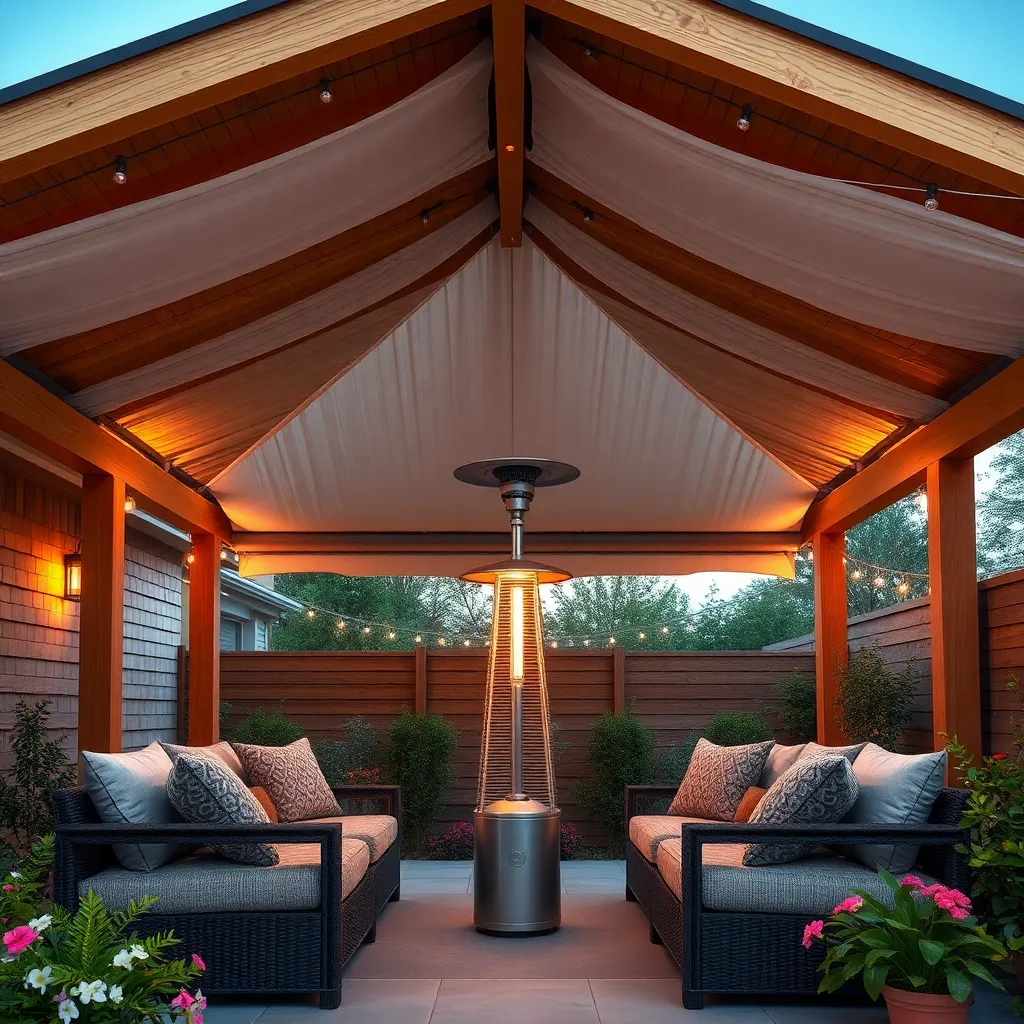
To enhance comfort in your outdoor spaces, consider adding portable heating solutions that can be easily moved and adjusted to fit your needs. Choose options like freestanding patio heaters or tabletop heaters, which offer flexibility and ease of use. These are typically powered by propane or electricity, with propane models providing a higher heat output ideal for larger areas. For a sleek and modern look, select heaters with a stainless steel finish that can withstand various weather conditions.
For those who enjoy DIY projects, constructing a custom fire pit can be both a cozy and stylish heating solution. Use materials like fire-rated bricks or concrete pavers to ensure safety and durability. Ensure your fire pit is at least 10 feet away from any structures and is placed on a non-flammable surface such as gravel or stone. For a more advanced touch, consider integrating lava stones or ceramic logs for enhanced heat distribution and aesthetics. By incorporating these heating solutions, you can extend the outdoor season and create a welcoming environment for guests.
Select Weatherproof Textiles and Fabrics
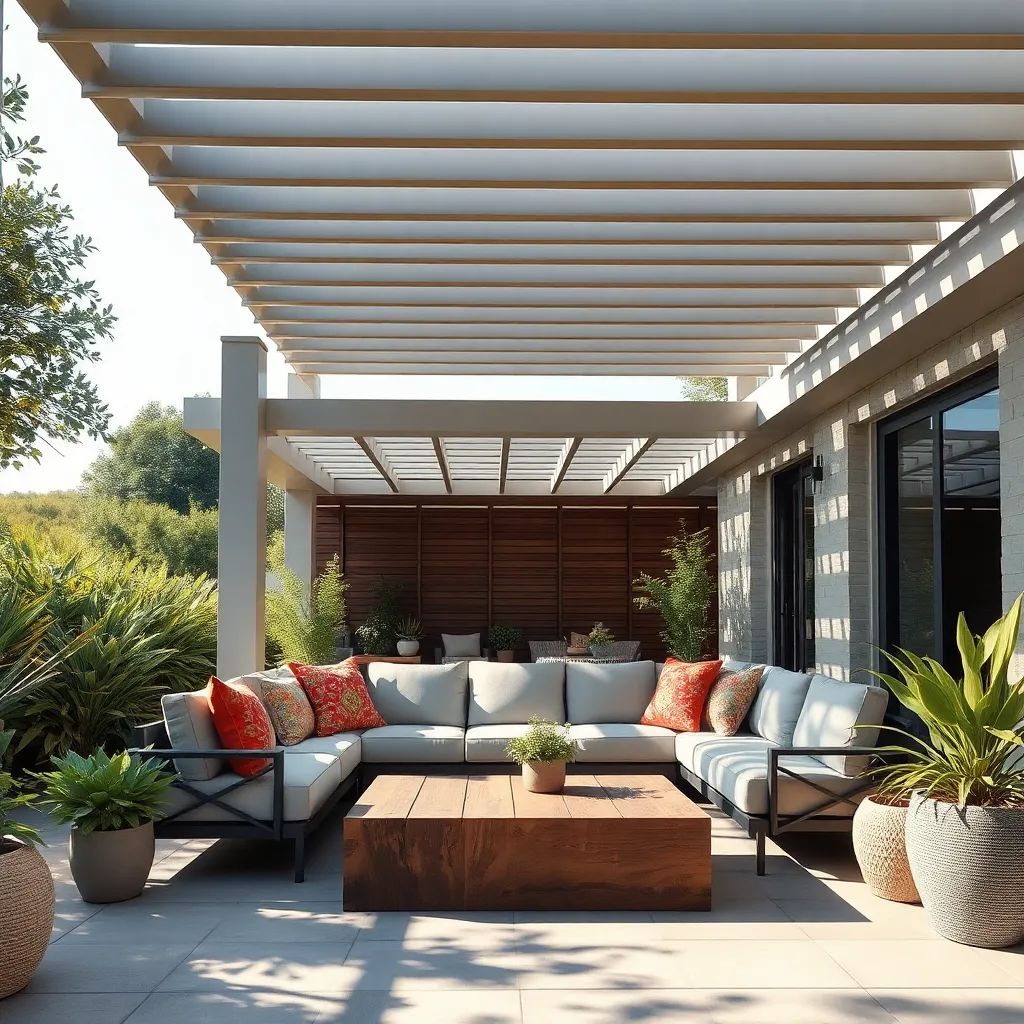
When selecting weatherproof textiles and fabrics for your outdoor shelter, consider materials such as acrylic, polyester, and PVC-coated fabrics for their durability and resistance to the elements. These materials are not only water-resistant but also offer UV protection, helping to maintain their color and integrity over time. For beginners, opt for fabrics labeled as ‘outdoor-rated’ to ensure they withstand varying weather conditions. For a more advanced approach, focus on textiles treated with mildew inhibitors and ensure all seams are double-stitched for added strength.
Incorporating design elements like removable and washable covers can make maintenance easier and prolong the life of your outdoor textiles. Consider using fabrics with a tight weave to prevent dirt and debris from settling in. For added comfort and style, use a mix of cushions and throws in complementary colors and patterns, ensuring they’re made from breathable materials to prevent overheating on sunny days. Utilize Velcro or ties to secure cushions in place during windy conditions, ensuring your outdoor space remains both stylish and functional.
Implement Natural Windbreak Features
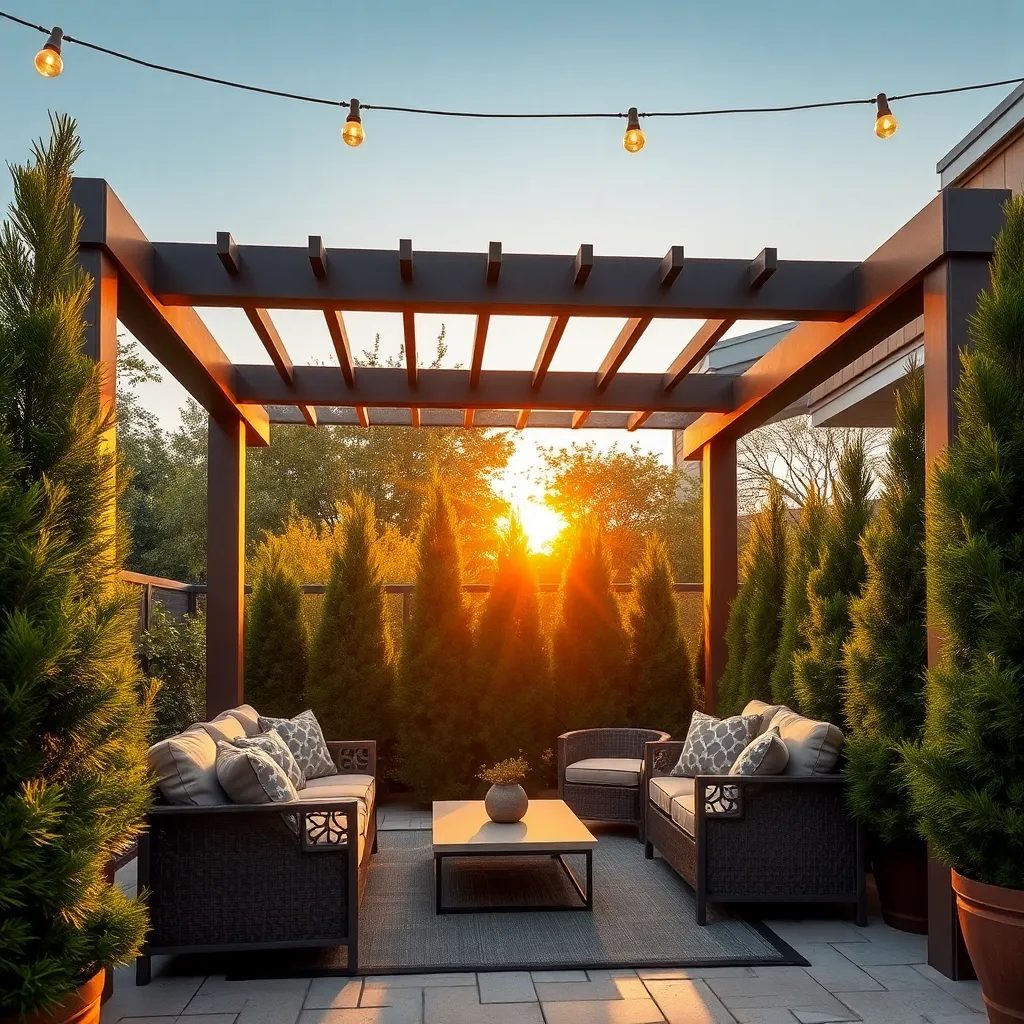
Incorporating natural windbreaks into your outdoor space can significantly enhance comfort while adding aesthetic value. Start by planting dense shrubs or trees like evergreens and bamboo, which can effectively reduce wind speed. For beginners, consider using fast-growing species such as Thuja Green Giant or Arborvitae, which provide year-round protection and privacy. Arrange these plants in staggered rows to create a more effective barrier, and ensure they are spaced appropriately—typically about 3 to 5 feet apart depending on the species—to allow for healthy growth and optimal wind reduction.
For those seeking a more advanced approach, combine natural elements with structural features. Use trellises or latticework as a base for climbing plants like honeysuckle or clematis, which can fill gaps and provide extra wind protection. When designing your windbreak, aim for a height of at least 6 to 8 feet to shield against strong gusts effectively. Consider incorporating local materials such as stone or wood to blend seamlessly into the landscape, enhancing both function and beauty. By layering these natural and structural elements, you can create a customized, resilient windbreak that suits your specific environment and design aesthetic.
Create Multi-Level Relaxation Spaces
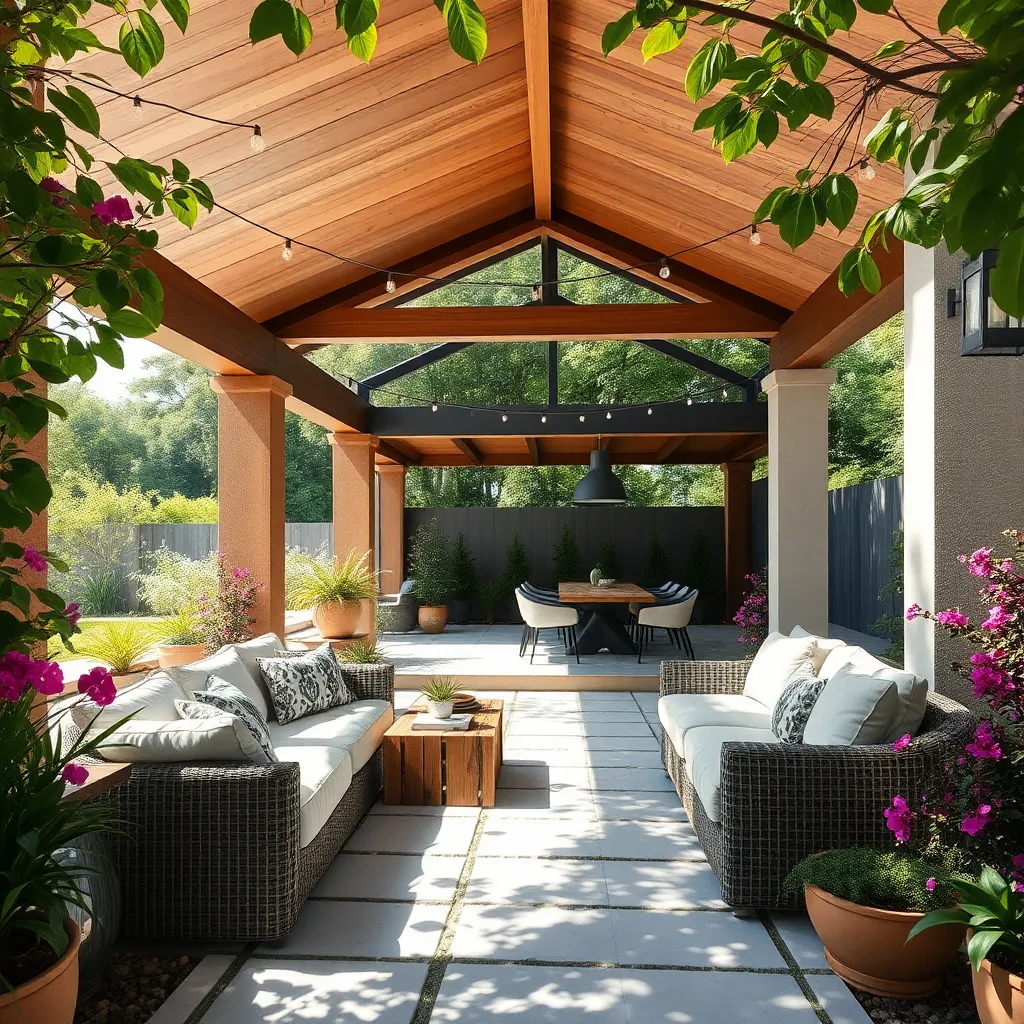
For a truly serene outdoor experience, consider creating multi-level relaxation spaces that cater to different moods and activities. Start with a ground-level deck or patio using durable materials like composite decking or natural stone. These materials are not only aesthetically pleasing but also long-lasting and low-maintenance. Add a few steps leading to an elevated platform or pergola, providing a distinct area for lounging or dining. Ensure the steps are wide enough for safety and comfortable transition, ideally around 36 inches in width.
Incorporate design elements like built-in seating or planters to define each level’s purpose and add functionality. For instance, use a combination of wood and weather-resistant fabrics for a cozy seating nook, and integrate LED lighting for ambiance and safety during evening hours. Enhance the space further by adding vertical elements, such as a pergola with climbing plants, to create shade and privacy. Advanced gardeners might consider incorporating a small water feature or fire pit, which adds both visual appeal and tranquility, creating a perfect spot for unwinding in your outdoor retreat.
Install Eco-Friendly Cooling Misters
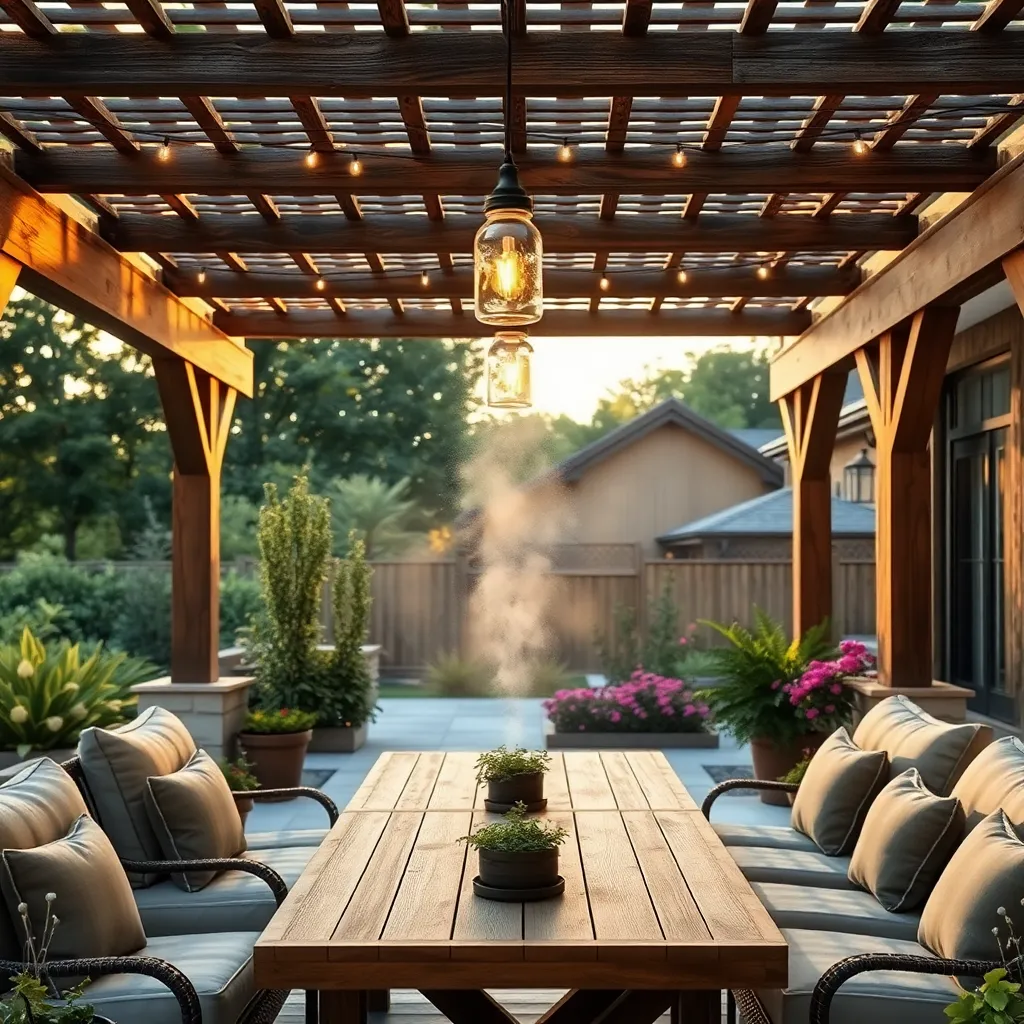
Transform your outdoor space into a cool oasis by installing eco-friendly cooling misters. These systems can significantly reduce the temperature in your outdoor areas by up to 20 degrees Fahrenheit. To start, opt for misters that use low-pressure water systems to conserve water while providing a refreshing mist. Install them along pergolas, patio roofs, or shaded structures for maximum effect. For a more sustainable option, consider solar-powered misters, which harness the sun’s energy to operate, reducing your carbon footprint and saving on energy costs.
When installing misters, use high-quality, corrosion-resistant materials such as stainless steel or brass to ensure longevity and durability. For beginners, there are easy-to-install DIY kits that require minimal tools and expertise. Advanced users might explore integrating the system with a smart home setup, allowing you to control the misters remotely via your smartphone. This setup can be customized to operate during the hottest parts of the day or based on personal preferences, ensuring your outdoor space remains inviting all summer long.
Design with Natural Shade Elements
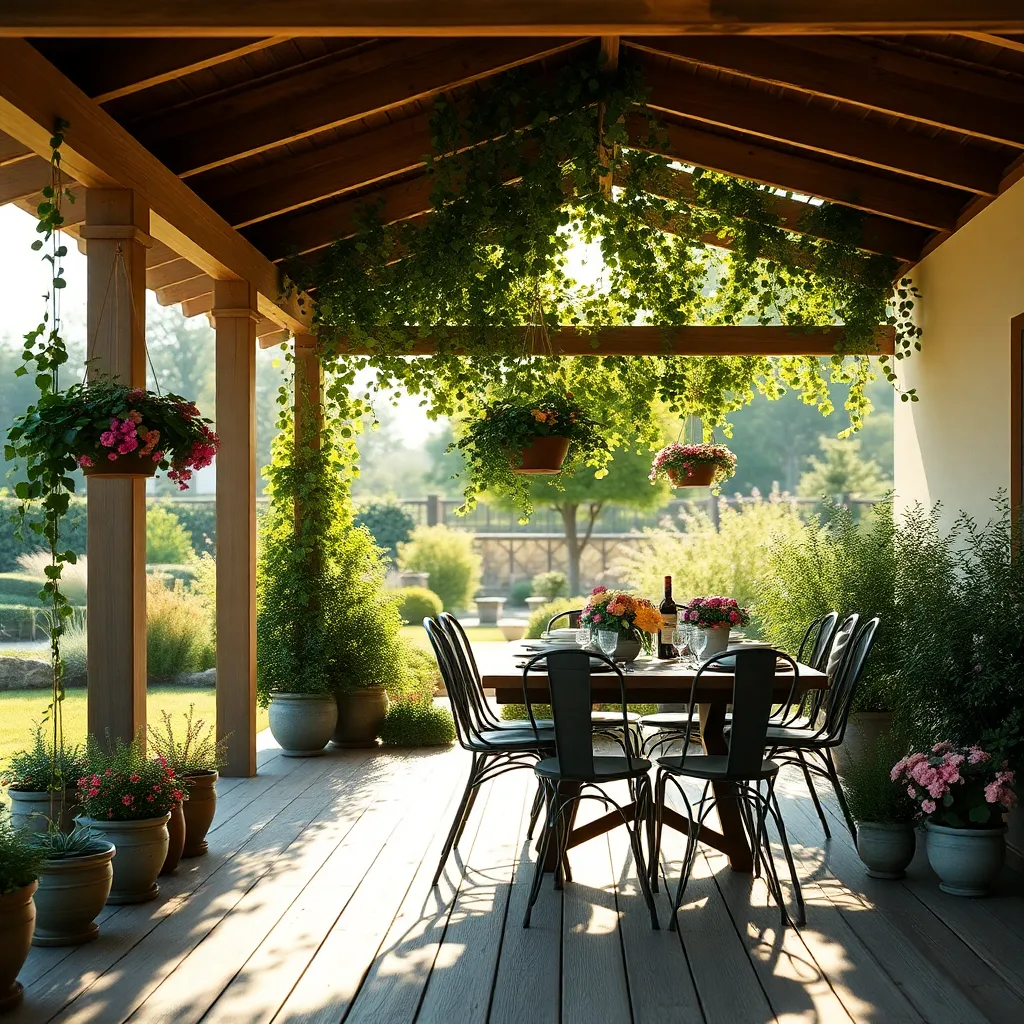
Designing with natural shade elements not only enhances the aesthetic appeal of your outdoor space but also provides an eco-friendly method to keep it cool. Start by planting fast-growing trees like maples or willows on the southern or western sides of your yard to block harsh afternoon sun. Consider incorporating climbing plants such as wisteria or clematis on a trellis or pergola—these can create beautiful, dappled shade and reduce reliance on artificial cooling methods.
For a more structured approach, construct a pergola using sustainable materials like reclaimed wood or bamboo. Ensure the structure is sturdy by anchoring the posts at least 2 feet deep in concrete for stability. To maximize shade, position the slats of your pergola to run east to west; this orientation effectively blocks the sun as it moves across the sky. For those looking to add a touch of creativity, incorporate a living roof with drought-resistant plants like sedum for additional insulation and natural beauty.
Use Durable, All-Weather Flooring
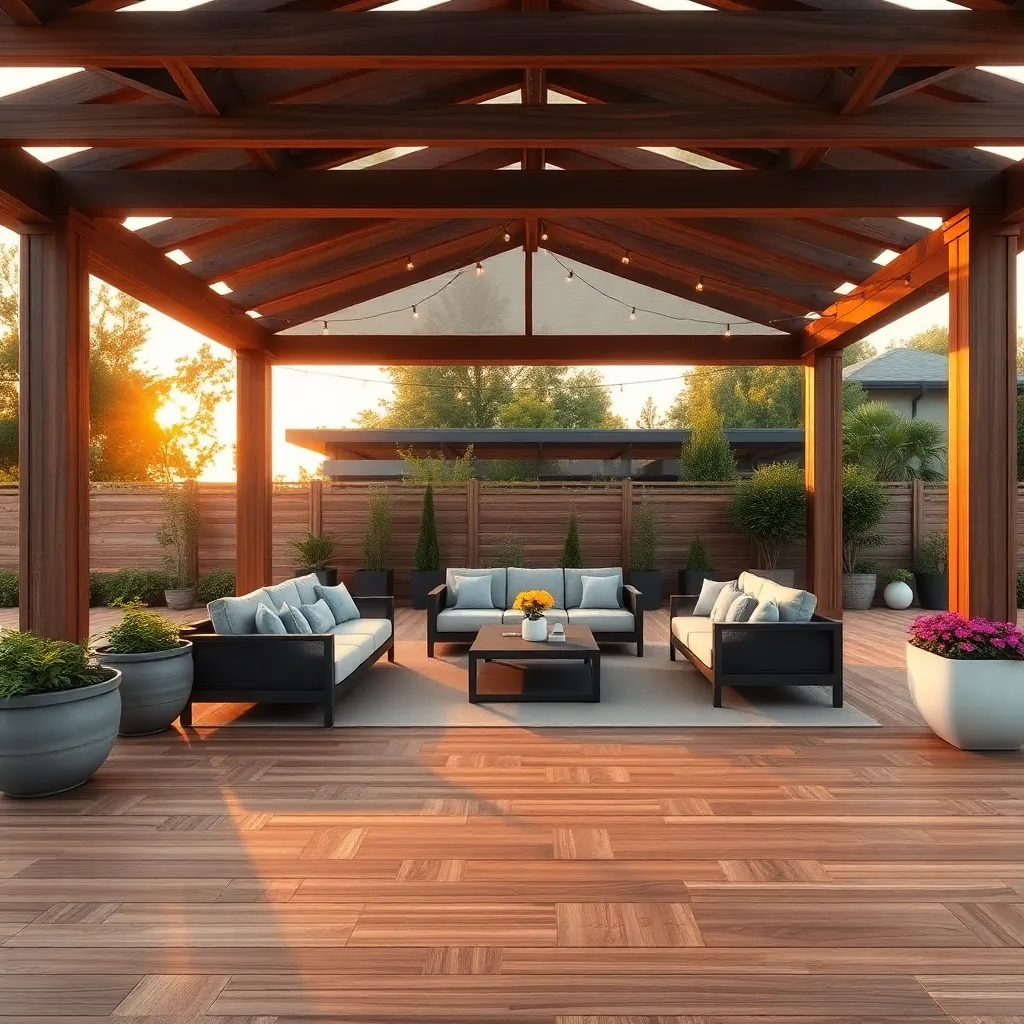
When selecting flooring for your outdoor shelter, prioritize materials that can withstand the elements. Consider options like composite decking, which combines durability with a wood-like appearance, or opt for concrete pavers for a sturdy, low-maintenance surface. Both choices are resistant to moisture and temperature changes, making them ideal for all-weather use. For a beginner-friendly project, start with composite decking, as it often comes with straightforward installation kits.
For those looking to add a touch of elegance, consider using natural stone such as slate or travertine, which offers a timeless look and excellent durability. Ensure proper sealing to protect against stains and weather damage. Advanced DIYers can incorporate a drainage system beneath the flooring to prevent water accumulation, enhancing longevity and safety. Remember to maintain a slight slope—around 1-2%—to facilitate water runoff and avoid pooling.
Conclusion: Creating Beautiful Outdoor Spaces
In wrapping up our journey through ‘9 Outdoor Comfort Ideas for Your Next Project,’ we explored the transformative power of shared outdoor activities in strengthening relationships. From creating cozy seating areas that invite intimate conversations to designing spaces that encourage shared hobbies, each idea is crafted to enhance connection. We looked at the benefits of ambient lighting to set a mood of togetherness and the importance of personalizing your space to reflect mutual interests. Further, we touched on the magic of al fresco dining, the joy of garden collaborations, and the tranquility of water features to foster relaxation and bonding.
Now, it’s time to transform these insights into action. Start by selecting one idea that resonates with your relationship goals and begin implementing it today. Whether it’s a new seating arrangement or planning a dinner under the stars, taking that first step is crucial.
Remember to bookmark this article for future inspiration as your relationship evolves. By revisiting these concepts, you’ll continually find new ways to nurture and grow your connection. Look forward to a future where your shared spaces are not only beautiful but also bastions of love and understanding, fortifying your relationship with each thoughtful touch.
